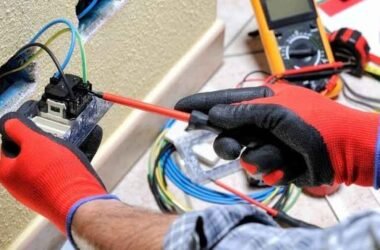Water can be both a friend and a foe when it comes to your home. While it sustains life and supports daily routines, it can also cause severe damage if not properly controlled. A single burst pipe or unnoticed leak can lead to significant structural problems, mold growth, and expensive repairs.
Preventing water-related disasters requires awareness, regular maintenance, and timely action. Taking proactive steps today can save you from substantial financial losses and preserve the comfort and safety of your living space.
Preventing Plumbing Failures and Leaks
One of the most common causes of water damage stems from hidden or neglected plumbing issues. Pipes, joints, and fixtures age over time, and even minor leaks can worsen quickly.
Regular inspection of plumbing lines, faucets, and drains helps detect problems early before they turn into costly emergencies. Homeowners should pay attention to water pressure and ensure that connections are tight and free from corrosion.
Having access to 24/7 emergency plumbing services can make a crucial difference when a sudden leak or pipe burst occurs. Professional plumbers can identify and resolve problems efficiently, minimizing the extent of damage and helping to restore your home quickly.
Early detection and professional intervention are key to avoiding long-term structural complications caused by water exposure.
Regular Roof and Gutter Maintenance
Your roof serves as the first line of defense against rain and external moisture. Missing shingles, cracked tiles, or blocked gutters can allow water to seep into ceilings, walls, and insulation. Inspecting your roof at least twice a year ensures that small issues are identified before they lead to leaks inside your home.
Cleaning gutters and downspouts regularly is equally important. Clogged gutters can cause water to overflow and pool around the foundation, weakening its integrity over time. By keeping drainage systems clear and functional, you protect both your roof and foundation from unnecessary strain.
If you notice water stains on the ceiling or peeling paint near the roofline, these may be early signs of water infiltration that should be addressed promptly.
Safeguarding the Foundation
The foundation of your home is vulnerable to water seepage, especially during heavy rainfall or if the surrounding ground remains damp. Poor drainage around the property can lead to cracks or shifting soil, both of which can compromise stability. To prevent such issues, ensure that the ground around your home slopes slightly away from the foundation, directing water away rather than allowing it to accumulate.
Installing a sump pump in basements or low-lying areas can also provide a reliable backup system during storms or flooding. Regularly check that your sump pump is operational, and consider having a battery-powered backup for power outages.
Dishwashers are especially prone to leaks if hoses or fittings wear out. Replacing rubber hoses with stainless steel ones and inspecting seals regularly can prevent water damage. Professional checks for dishwashers can extend their lifespan and avoid costly repairs.
Maintaining Appliances and Water Fixtures
Many household appliances rely on water supply lines, and these connections can wear out over time. Washing machines, dishwashers, and water heaters are all potential sources of leaks if hoses or fittings become loose.
Replace rubber hoses with stainless steel braided ones for greater durability, and inspect connections at least once a year.
Water heaters should also be checked regularly for signs of rust or moisture around the base. A failing water heater can leak slowly before a complete rupture occurs, resulting in extensive water damage.
Installing Water Leak Detection Systems
Technology offers practical tools to help detect and prevent water disasters. Smart leak detectors can sense even small amounts of moisture and send alerts to your phone, giving you a chance to act before damage spreads. Placing these sensors near appliances, sinks, or under pipes adds an extra layer of protection.
Some systems can automatically shut off the main water supply when a leak is detected, reducing the impact of sudden pipe failures. While these devices do not replace regular maintenance, they serve as valuable safeguards, especially for homeowners who travel frequently or live in larger properties.
Protecting Against Basement Flooding
Basements are particularly susceptible to flooding due to their location below ground level. Cracks in walls, poor drainage, or malfunctioning sump pumps can lead to water accumulation. Sealing basement walls with waterproof coatings and ensuring that window wells are properly covered can significantly reduce the risk of flooding.
If your home is in an area prone to heavy rainfall, installing a French drain system can help redirect water away from the basement. Regular inspection of seals and drainage systems ensures that your basement remains dry even during harsh weather conditions.
Managing Outdoor Water Flow
The way water flows around your property plays a significant role in preventing water-related damage. Ensure that gutters discharge water at least several feet away from the foundation through proper extensions or splash blocks. Check that downspouts are not clogged and that they direct water into appropriate drainage channels.
Landscaping can also influence how water moves. Avoid planting large trees or shrubs too close to your foundation, as their roots can disrupt underground pipes and drainage systems. Using gravel or stone around the perimeter of your home can improve drainage and prevent pooling near the base.
Checking Windows, Doors, and Exterior Walls
Gaps or cracks around windows and doors are common entry points for moisture. Sealing these areas with weather-resistant caulking helps prevent leaks during rain or humidity. Exterior walls should also be inspected for cracks, especially after harsh weather. Paint or sealant acts as a protective layer, preventing water from seeping into the structure.
For homes with older siding or brickwork, consider resealing or repointing as needed. Preventing exterior moisture intrusion is essential, as trapped water can cause wood rot and mold growth, both of which weaken the structural integrity of your home.
Practicing Preventive Maintenance
Preventive maintenance remains the most effective strategy for avoiding costly water damage. Simple actions like inspecting water lines, cleaning gutters, and checking appliance connections can spare you from unexpected repair bills. Establishing a seasonal checklist ensures that nothing is overlooked.
When combined with awareness and quick response, these efforts protect not only your property but also your peace of mind. By maintaining your plumbing, roof, drainage systems, and appliances, you create a home environment that is resilient against water-related disasters.









